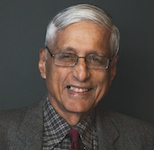Don’t tamper with hallowed history
Prakash Shah, Anand Patwardhan and Ganesh N. Devy, the three who initiated a nationwide objection to the government’s project to turn the Sabarmati Ashram into “a world-class memorial”, are, first and foremost, artists with a conscience. While Gandhi features in some of Patwardhan’s remarkable documentaries, the film-maker is not a conventional or even unconventional Gandhian. Devy is a famed linguist-novelist, and Shah, founder-editor of the Gujarati journal Nireekshak, is the current president of the Gujarati Sahitya Parishad.
If someone like me readily signed their statement (which was preceded by a strong media article by Ramachandra Guha), it was not because I’m a Gandhi descendant, not even because I’ve studied Gandhi at length. I’ll soon give my chief reason, but a compelling one was the thought of a touristy constellation of structures dwarfing, if not swallowing, the Ashram on the banks of the Sabarmati.
Like lakhs of others, I love the Ashram’s staggering simplicity. The river, the trees and the sloping low roofs of the more-than-a-century-old hut-like dwellings, including ‘Hriday Kunj’, where Gandhi and Kasturba lived, are a treat to any visitor to Ahmedabad. As are the graceful companion buildings, designed by Charles Correa in the 1960s, inside which visitors can picture the history of the Ashram and of the movements associated with it.
It was at Sabarmati Ashram that ancient moral-spiritual vows were given powerful new meanings by being joined to critical new vows of 1) fearlessness, 2) the abolition of untouchability, 3) equality irrespective of religion, and 4) the beauty of earning your bread with your labour. As a result, this plain, neat Ashram became the seedbed for a social revolution.
And a political revolution, too, for it was in this Ashram that at least three history-changing movements were born, each crucial to India’s eventual independence. One, in 1919, was a nationwide satyagraha against the free speech-curbing Rowlatt Act, a revolt the Raj answered with the Jallianwala Bagh massacre. Another, from 1920 to 1922, was for Non-cooperation with the Empire. The third (1930-33), commencing with the Salt March, was for Civil Disobedience.
Do we want to tamper thoughtlessly with this hallowed history?
Which brings me to my strongest objection. I cannot accept that the Narendra Modi government wishes to recall or implement Gandhi’s ideas. Taking Trump, when he was the American president, and Xi Jinping, the Chinese numero uno, to Sabarmati, and getting photographed with them in the Gandhi-Kasturba hut, were exercises to promote Modi, not the Mahatma.
Gandhi’s goals were never concealed. Not in Sabarmati. Not during the Dandi March. Not in the prisons where the Empire incarcerated him. Not during Quit India in 1942. Not in his 1946-47 pilgrimages to protect threatened lives in Noakhali and Bihar—Hindu lives in Noakhali, Muslim ones in Bihar. Not in the decisive last year of his life, 1947-48, when, fully backed by both Nehru and Patel, Gandhi ensured that free India would be a nation belonging to all, not merely to its Hindu majority. The Ambedkar-architected Constitution enshrined this commitment to equality and pluralism.
I question the Modi government’s loyalty to this pledge. In his more than seven years as prime minister, and in a longer spell earlier as Gujarat’s chief minister, Narendra Modi has faced dozens of situations when that pledge cried out for reiteration. Including occasions of lynching and mob attacks when the police needed to be publicly ordered to protect all lives and prosecute all offenders, the people assured, and the offenders condemned.
Was such a call, assurance or rebuke heard even once? Can you wink at majoritarian supremacy and bow before a Gandhi statue at the same time? Can you ask that people be “identified by their clothes” and still praise one who sang Ishwar Allah Tere Naam? The hypocrisy repels.
To Gandhi, free speech was as fundamental as equal protection of all Indians. Can you remain silent as scores of selfless activists remain behind bars? When a reporter who travels to cover a murder-rape is arrested? And still claim that you are projecting Gandhi to the world? A Gandhi who for most of his life was a journalist too?
The Sabarmati Ashram has needed and will need public money. If improvements are required, the Ashram’s trustees, Gandhi scholars and a range of architects and environmentalists should be involved. No government of any party should ‘shape’ the Ashram, least of all one opposed to Gandhi’s core goals.
